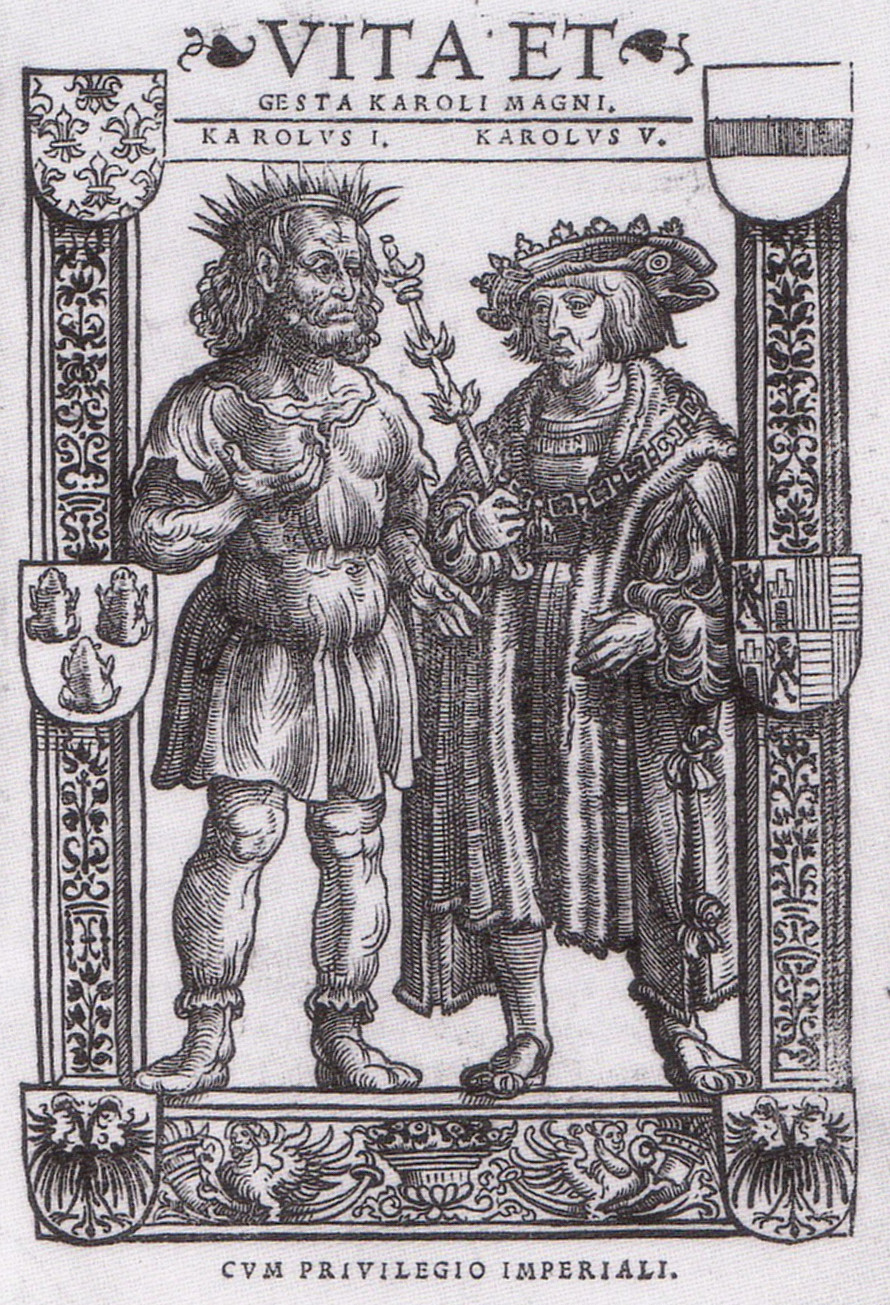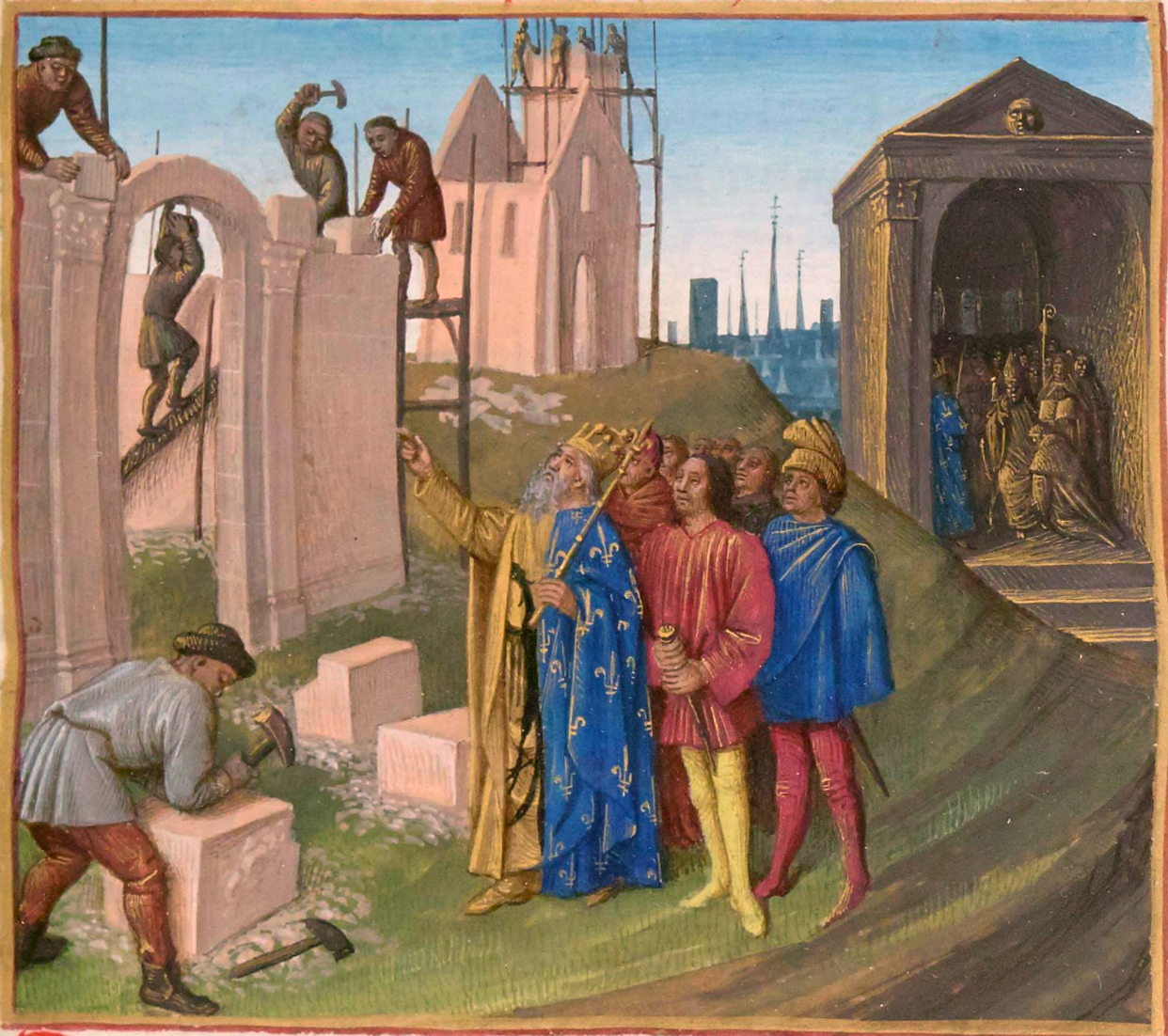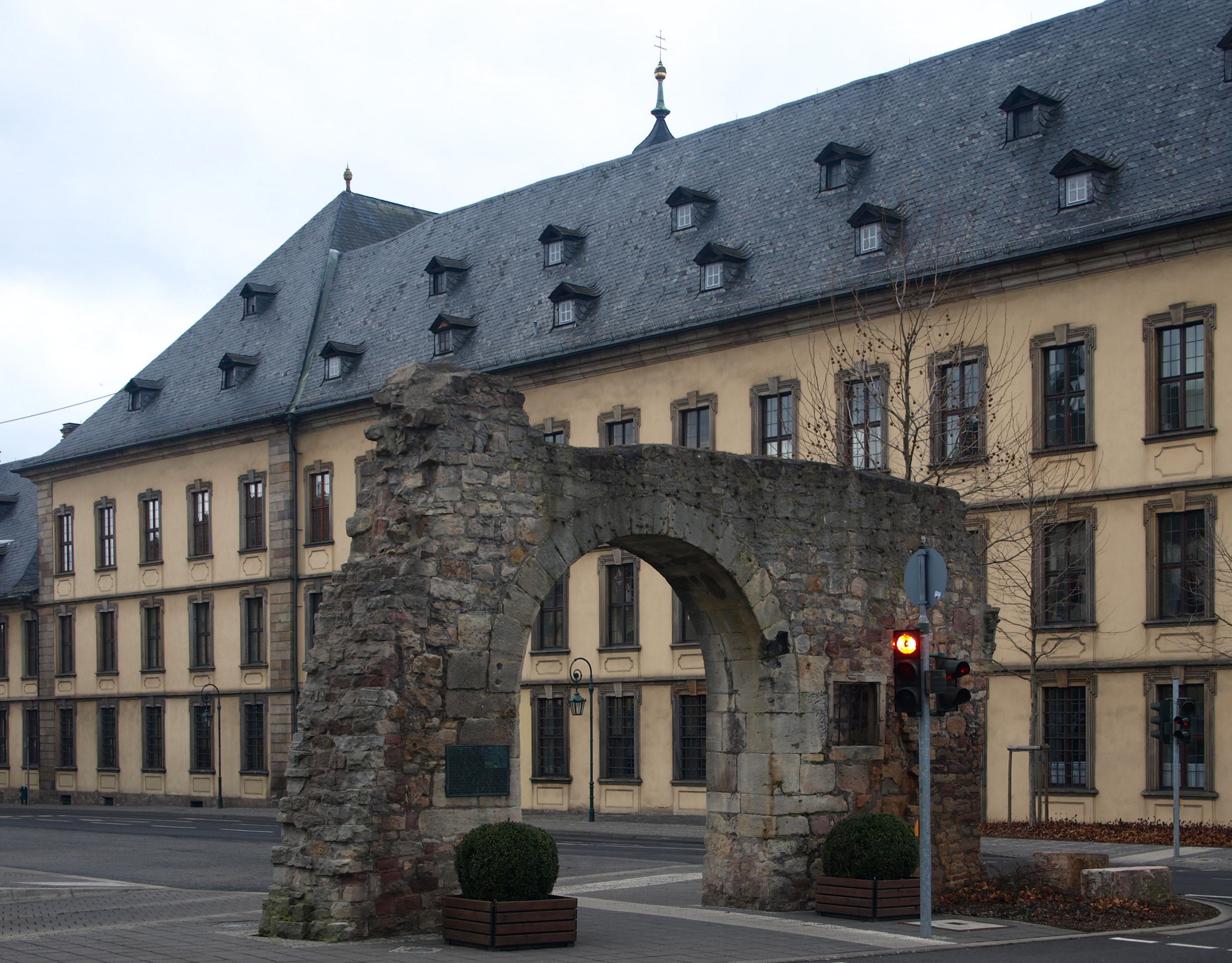|
Vita Karoli Magni
''Vita Karoli Magni'' (''Life of Charlemagne'') is a biography of Charlemagne, King of the Franks and Holy Roman Emperor, Emperor of the Romans, written by Einhard.Ogg, p. 109 The ''Life of Charlemagne'' is a 33 chapter account starting with the full genealogy of the Merovingian dynasty, Merovingian family, going through the rise of the Carolingian dynasty, Carolingian dynasty, and then detailing the exploits and temperament of King Charles. It has long been seen as one of the key sources for the reign of Charlemagne and provides insight into the court of King Charles and the events that surrounded him. Synopsis The work begins with a preface that is mainly Einhard explaining why he is writing the book, highlighting the idea that he feels it is his duty and that he had such love for Charles that he felt that it would be a tragedy if he was forgotten. The book then moves onto the fall of the Merovingian dynasty, Merovingian family and how the Carolingian dynasty, Carolingian ca ... [...More Info...] [...Related Items...] OR: [Wikipedia] [Google] [Baidu] |
Lupus Servatus
Lupus Servatus, also Servatus Lupus ( 805 – c. 862), in French Loup, was a Benedictine monk and Abbot of Ferrières Abbey during the Carolingian dynasty, who was also a member of Charles the Bald's court and a noted theological author of the 9th century. He is sometimes regarded as the first humanist of the Early Middle Ages because of the quality of his literary style, his love of learning, and his work as a scribe and textual critic. Early life Lupus was born into an influential family within the Archdiocese of Sens. Many of his family held influential positions in the Church or court. His father was Bavarian and his mother Frankish. He assumed the nickname of Servatus in commemoration of his miraculous escape from danger either in a serious illness or on the battlefield. He began his education at the Abbey of Saints Peter and Paul in Ferrières-en-Gâtinais under St. Aldric, then abbot of the monastery. Here he was educated in the trivium and quadrivium. Lupus was not f ... [...More Info...] [...Related Items...] OR: [Wikipedia] [Google] [Baidu] |
Biographies About Royalty
A biography, or simply bio, is a detailed description of a person's life. It involves more than just basic facts like education, work, relationships, and death; it portrays a person's experience of these life events. Unlike a profile or curriculum vitae (résumé), a biography presents a subject's life story, highlighting various aspects of their life, including intimate details of experience, and may include an analysis of the subject's personality. Biographical works are usually non-fiction, but fiction can also be used to portray a person's life. One in-depth form of biographical coverage is called legacy writing. Works in diverse media, from literature to film, form the genre known as biography. An authorized biography is written with the permission, cooperation, and at times, participation of a subject or a subject's heirs. An unauthorized biography is one written without such permission or participation. An autobiography is written by the person themselves, sometimes wit ... [...More Info...] [...Related Items...] OR: [Wikipedia] [Google] [Baidu] |
9th-century Books In Latin
The 9th century was a period from 801 (represented by the Roman numerals DCCCI) through 900 (CM) in accordance with the Julian calendar. The Carolingian Renaissance and the Viking raids occurred within this period. In the Middle East, the House of Wisdom was founded in Abbasid Baghdad, attracting many scholars to the city. The field of algebra was founded by the Muslim polymath al-Khwarizmi. The most famous Islamic scholar Ahmad ibn Hanbal was tortured and imprisoned by Abbasid official Ahmad ibn Abi Du'ad during the reign of Abbasid caliph al-Mu'tasim and caliph al-Wathiq. In Southeast Asia, the height of the Mataram Kingdom happened in this century, while Burma would see the establishment of the major kingdom of Pagan. Tang China started the century with the effective rule under Emperor Xianzong and ended the century with the Huang Chao rebellions. In America, the Maya experienced widespread political collapse in the central Maya region, resulting in internecine warfare, ... [...More Info...] [...Related Items...] OR: [Wikipedia] [Google] [Baidu] |
Thomas Hodgkin (historian)
Thomas Hodgkin, FBA (29 July 18312 March 1913)Martin, G. H. (2004"Hodgkin, Thomas (1831–1913), historian"in ''Oxford Dictionary of National Biography'' was a British historian, biographer, banker, and Quaker minister. Hodgkin's '' magnum opus'', ''Italy and Her Invaders'', was an eight-volume work on the history of the wars in the Late Roman Empire. Biography Hodgkin was son of John Hodgkin, barrister and Quaker minister, and Elizabeth Howard (daughter of Luke Howard). In 1861 he married Lucy Ann (1841–1934) (daughter of Alfred Fox who created Glendurgan Garden and Sarah, born Lloyd, his wife). They had three sons and three daughters. Having been educated as a member of the Society of Friends and taken the degree of B.A. at University College London and obtained the additional degrees of D.C.L and Litt. D., likely at the University of Oxford. He became a partner in the banking house of Hodgkin, Barnett, Pease and Spence, Newcastle-on-Tyne, a firm afterwards amalgam ... [...More Info...] [...Related Items...] OR: [Wikipedia] [Google] [Baidu] |
Middle Ages
In the history of Europe, the Middle Ages or medieval period lasted approximately from the 5th to the late 15th centuries, similarly to the post-classical period of global history. It began with the fall of the Western Roman Empire and transitioned into the Renaissance and the Age of Discovery. The Middle Ages is the middle period of the three traditional divisions of Western history: classical antiquity, the medieval period, and the modern period. The medieval period is itself subdivided into the Early, High, and Late Middle Ages. Population decline, counterurbanisation, the collapse of centralised authority, invasions, and mass migrations of tribes, which had begun in late antiquity, continued into the Early Middle Ages. The large-scale movements of the Migration Period, including various Germanic peoples, formed new kingdoms in what remained of the Western Roman Empire. In the 7th century, North Africa and the Middle East—once part of the Byzantine Empire� ... [...More Info...] [...Related Items...] OR: [Wikipedia] [Google] [Baidu] |
Abbey
An abbey is a type of monastery used by members of a religious order under the governance of an abbot or abbess. Abbeys provide a complex of buildings and land for religious activities, work, and housing of Christians, Christian monks and nuns. The concept of the abbey has developed over many centuries from the early monastic ways of religious men and women where they would live isolated from the lay community about them. Religious life in an abbey may be monastic. An abbey may be the home of an enclosed religious order or may be open to visitors. The layout of the church and associated buildings of an abbey often follows a set plan determined by the founding religious order. Abbeys are often self-sufficient while using any abundance of produce or skill to provide care to the poor and needy, refuge to the persecuted, or education to the young. Some abbeys offer accommodation to people who are seeking retreat (spiritual), spiritual retreat. There are many famous abbeys across ... [...More Info...] [...Related Items...] OR: [Wikipedia] [Google] [Baidu] |
Public Works
Public works are a broad category of infrastructure projects, financed and procured by a government body for recreational, employment, and health and safety uses in the greater community. They include public buildings ( municipal buildings, schools, and hospitals), transport infrastructure ( roads, railroads, bridges, pipelines, canals, ports, and airports), public spaces (public squares, parks, and beaches), public services ( water supply and treatment, sewage treatment, electrical grid, and dams), environmental protection ( drinking water protection, soil erosion reduction, wildlife habitat preservation, preservation and restoration of forests and wetlands) and other, usually long-term, physical assets and facilities. Though often interchangeable with public infrastructure and public capital, public works does not necessarily carry an economic component, thereby being a broader term. Construction may be undertaken either by directly employed labour or by a ... [...More Info...] [...Related Items...] OR: [Wikipedia] [Google] [Baidu] |
Historia Augusta
The ''Historia Augusta'' (English: ''Augustan History'') is a late Roman collection of biographies, written in Latin, of the Roman emperors, their junior colleagues, Caesar (title), designated heirs and Roman usurper, usurpers from 117 to 284. Supposedly modeled on the similar work of Suetonius, ''The Twelve Caesars'', it presents itself as a compilation of works by six different authors, collectively known as the ''Scriptores Historiae Augustae'', written during the reigns of Diocletian and Constantine I and addressed to those emperors or other important personages in Ancient Rome. The collection, as extant, comprises thirty biographies, most of which contain the life of a single emperor, but some include a group of two or more, grouped together merely because these emperors were either similar or contemporaneous. The true authorship of the work, its actual date, its reliability and its purpose have long been matters for controversy by historians and scholars ever since Hermann ... [...More Info...] [...Related Items...] OR: [Wikipedia] [Google] [Baidu] |
Seligenstadt
Seligenstadt is a town in the Offenbach district in the ''Regierungsbezirk'' of Darmstadt in Hesse, Germany. Seligenstadt is one of Germany's oldest towns and was already of great importance in Carolingian times. Geography Location Seligenstadt is one of 13 towns and communities in the Offenbach district. The town lies on the river Main’s left bank roughly 25 km southeast of Frankfurt am Main, directly neighbouring Bavaria. Neighbouring communities Seligenstadt borders in the north on the community of Hainburg, in the east on the community of Karlstein ( Aschaffenburg district in Bavaria), in the southeast on the community of Mainhausen, in the south on the town of Babenhausen ( Darmstadt-Dieburg) and in the west on the town of Rodgau. Constituent communities Seligenstadt's '' Stadtteile'' are Seligenstadt, Klein-Welzheim and Froschhausen. Geology Seligenstadt is located in the Hanau-Seligenstadt Basin, a Cenozoic subsidence basin between the local highlands of Sp ... [...More Info...] [...Related Items...] OR: [Wikipedia] [Google] [Baidu] |
Aachen
Aachen is the List of cities in North Rhine-Westphalia by population, 13th-largest city in North Rhine-Westphalia and the List of cities in Germany by population, 27th-largest city of Germany, with around 261,000 inhabitants. Aachen is located at the northern foothills of the High Fens and the Eifel Mountains. It sits on the Wurm (Rur), Wurm River, a tributary of the Rur (river), Rur, and together with Mönchengladbach, it is the only larger German city in the drainage basin of the Meuse. It is the westernmost larger city in Germany, lying approximately west of Cologne and Bonn, directly bordering Belgium in the southwest, and the Netherlands in the northwest. The city lies in the Meuse–Rhine Euroregion and is the seat of the Aachen (district), district of Aachen ''(Städteregion Aachen)''. The once Celts, Celtic settlement was equipped with several in the course of colonization by Roman people, Roman pioneers settling at the warm Aachen thermal springs around the 1st cen ... [...More Info...] [...Related Items...] OR: [Wikipedia] [Google] [Baidu] |
Fulda
Fulda () (historically in English called Fuld) is a city in Hesse, Germany; it is located on the river Fulda and is the administrative seat of the Fulda district (''Kreis''). In 1990, the city hosted the 30th Hessentag state festival. History Middle Ages In 744 Saint Sturm, a disciple of Saint Boniface, founded the Benedictine monastery of Fulda as one of Boniface's outposts in the reorganization of the church in Germany. The initial grant for the abbey was signed by Carloman, Mayor of the Palace in Austrasia (in office 741–47), the son of Charles Martel. The support of the Mayors of the Palace, and later of the early Pippinid and Carolingian rulers, was important to Boniface's success. Fulda also received support from many of the leading families of the Carolingian world. Sturm, whose tenure as abbot lasted from 747 until 779, was most likely related to the Agilolfing dukes of Bavaria. Fulda also received large and constant donations from the Etichonids, a lea ... [...More Info...] [...Related Items...] OR: [Wikipedia] [Google] [Baidu] |






